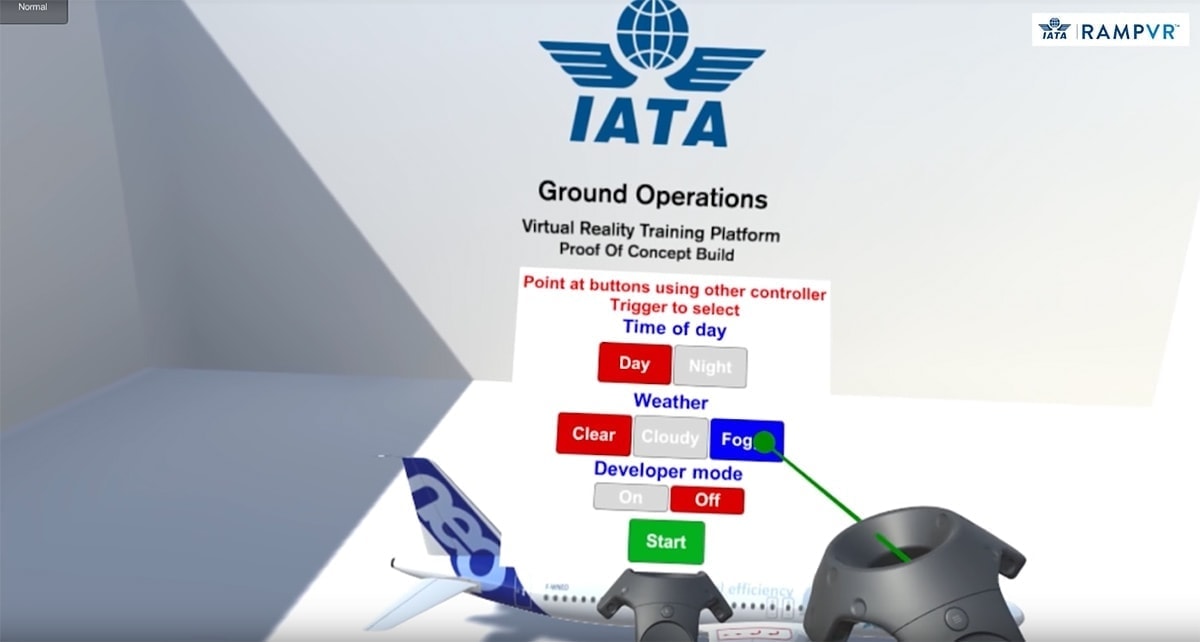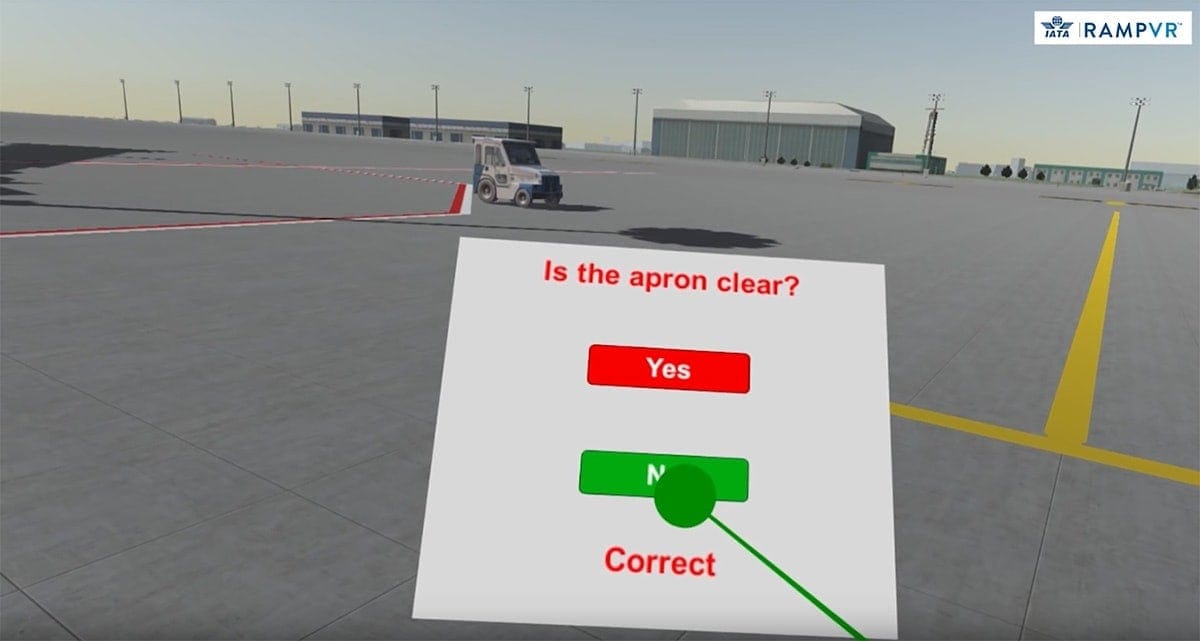
The International Air Transport Association (IATA) has recently developed a training platform based on virtual reality. Virtual reality makes it possible to replicate and explore environments by wearing glasses which produce an immersion effect with 360º vision and synchronise the image seen through the glasses with the user’s movements in real time. Depending on the level of sophistication of the virtual reality platform, some systems allow interaction with virtual objects by using a controller or wearing gloves.
Virtual reality allows realistic simulation on any type of scenario: from the surface of Mars to service ramps at airports, as in this case. IATA’s RampVR platform accurately replicates the taxiing lanes and parking aprons at airports, “placing” staff undergoing training there without the need for them to be anywhere near an airport.
Ramp services range from guiding the pilot to park the aircraft to emptying the plane’s bathroom tanks, loading and unloading of goods and luggage, catering, and passenger boarding and disembarking operations. This is also the airport area where aircraft undergo small maintenance operations, visual inspections, cleaning and de-icing, and refuelling.
Safety is paramount during ground staff training to avoid damage or personal injury, and to ensure smooth operation of the airport. In most airports around the world, these functions are regulated by IATA, and this is the case with training of ground support staff. IATA is an association of approximately 265 airlines, both domestic and international.
Advantages of the RampVR platform
According to IATA, the RampVR platform is intended to complement classroom learning, as a step towards practical training. The advantage of RampVR is that it introduces staff still undergoing training to a very realistic environment without, however, interfering with actual ramp operations taking place in live scenarios. Virtual reality is an improvement in the learning environment, as it eliminates risks and limitations such as noise, lighting or weather. It also eliminates restrictions in the timing of practical training and the strict verification process that staff undergoing training must go through before accessing a live service ramp.
Other advantages of RampVR are that it allows the replication of a wide variety of situations and many different types of aeroplanes, to which numerous minor damages may be “inflicted” to improve staff’s visual inspection capability. It also allows the replication of all manner of adverse conditions, in order to practice in daytime or night time operations, with busy or light traffic, and under different weather conditions.
Finally, the use of virtual reality allows practical training lessons to be filmed and reviewed later on, changes to be made in real time during training, or exercises to be paused in order to provide additional explanations or to clarify any doubts.








There are no comments yet